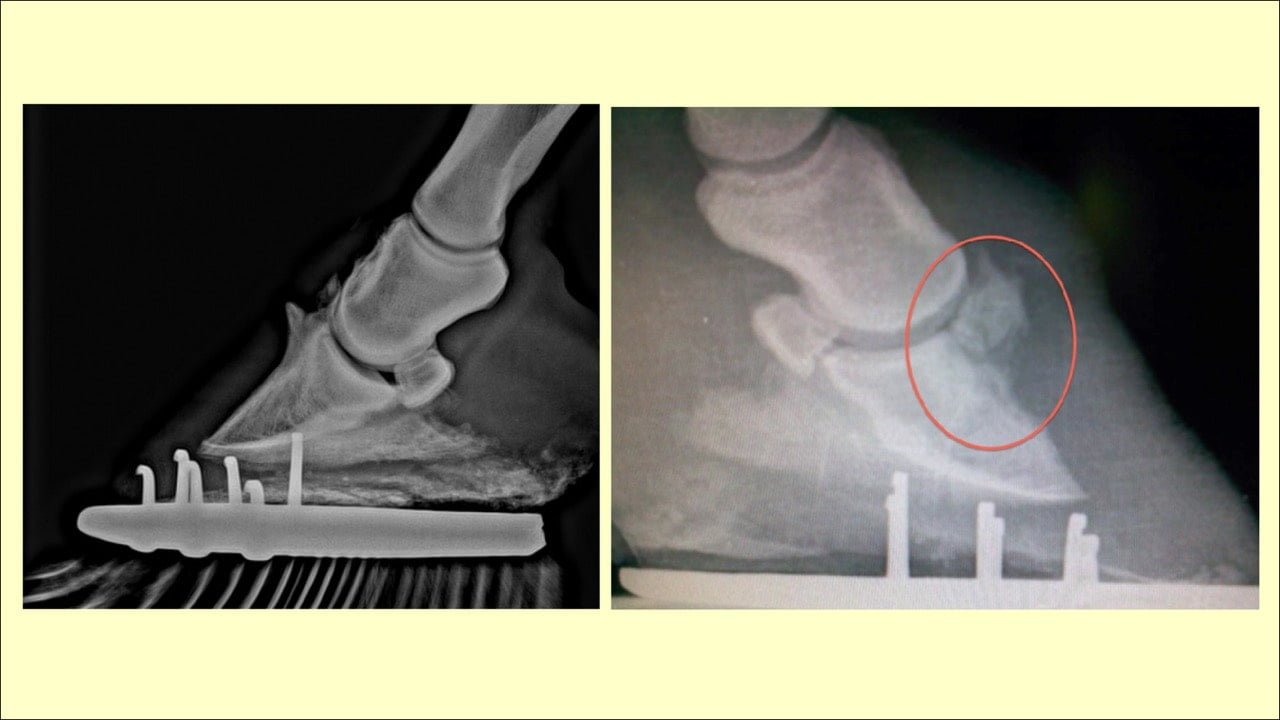TABLE OF CONTENTS
Pyramidal Disease in Horses
Pyramidal Disease in Horses is usually caused by a sprain of the extensor tendon at the point of its insertion to the process. It may also result from direct trauma.
The pyramidal process or extensor process of the os pedis gives attachment to the extensor tendon. Pyramidal Disease is also known as Extensor Process Disease or Buttress Foot.
Pyramidal Disease is an osteoperiostitis and consequent exostosis involving the pyramidal process.
Etiology
Pyramidal Disease is usually caused by a sprain of the extensor tendon at the point of its insertion to the process. It may also result from direct trauma.
Incidence
It is more common in the hind feet.
Symptoms
- Lameness– more and more pronounced during the disease progress
- Followed by exostosis which gives rise to the enlargement of the anterior aspect of the hoof in the coronet region
- In chronic case the shape of the foot is altered
- The exostosis stimulates the coronet region in the toe region leading to the formation of thick ridge of excess horn growth at the toe.
- This gives V shape to the foot instead of normal U shape
Diagnosis
- From lameness and appearance of the foot

Treatment
- No satisfactory treatment
- Neurectomy may be tried